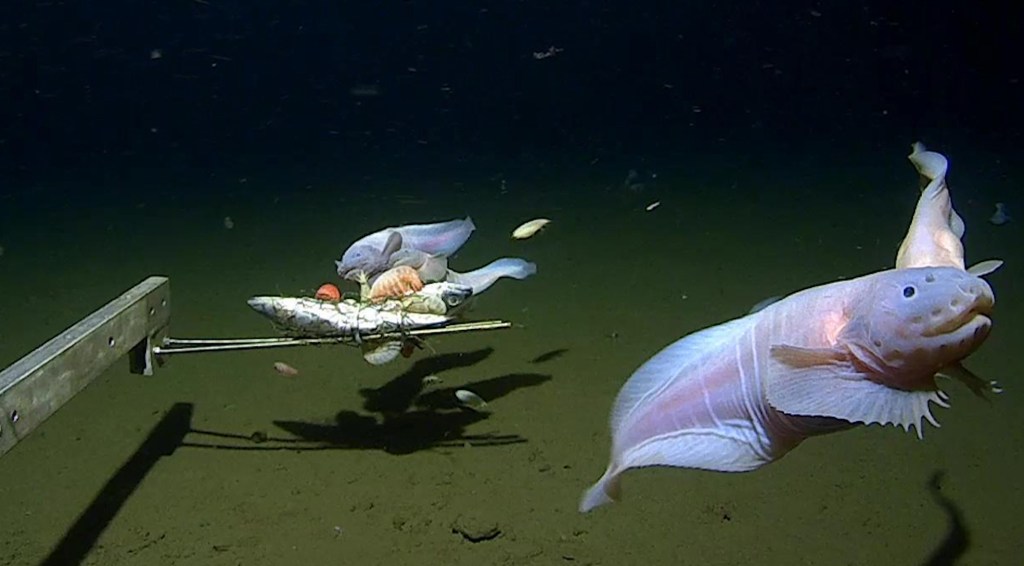We’re slowly realizing that we’ve contaminated an enormous swath of the planet, from the deepest ocean trenches to the highest mountain peaks, with plastic. Animals haven’t been spared, either. In fact, new research suggests some baby fish are spending their first days on Earth eating manufactured petroleum products.
The study, led by researchers at the National Oceanic and Atmospheric Administration and published Monday in the Proceedings of the National Academies of Sciences, found that larval fish nurseries off the coast of Hawaii are hotbeds of plastic pollution, with trash pieces outnumbering actual fish seven to one. As a result, baby fish looking for a bite are sometimes chowing down on tiny flecks of “prey-sized” plastic instead.
Videos by VICE
While the study only looked at one corner of the ocean, the researchers suspect their results may be globally relevant due to the ubiquity of plastic pollution.
“We believe our research and our findings are not just isolated but may be a window into other locations around the world,” said co-lead study author Jamison Gove, a research oceanographer at NOAA.

These scientists didn’t originally set out to document plastic pollution. They were simply interested in learning more about where larval fish like to hang out and what they’re eating during their early development. They hypothesized that surface slicks, ribbon-like features where surface ocean waters converge due to winds and waves, might be important nurseries because they trap and concentrate the plankton that baby fish eat.
To test that idea, the scientists conducted a series of “plankton tows” in slicks and nearby waters off the western coast of the island of Hawaii, using a fine mesh net to capture their tiny subjects. They then proceeded to sort and analyze fish larvae, zooplankton, and plankton-sized debris in their samples.
As the authors suspected, fish larvae and their prey were concentrated in the slicks. Unfortunately, so was plastic: Particles of the stuff were a whopping 126 times more abundant in slicks than in nearby ambient waters. Despite only accounting for 8 percent of the ocean surface habitat across their study area, slicks contained more than 90 percent of all plastic pollution.
“We weren’t naive enough to think there wouldn’t be plastic,” Gove said. “But I think the sheer amount …was surprising, and the fact that such a high proportion were so small.”
By dissecting hundreds of fish larvae, the researchers learned that those small pieces of plastic are making their way into the bellies of many types of fish, including commercially-important species like swordfish and mahi-mahi as well as flying fish, a key prey item for seabirds. Overall, fish larvae in slicks were about twice as likely to have ingested plastic as those found elsewhere.
The researchers aren’t sure how ingesting plastic impacts the health of these baby fish, but there are reasons to be concerned. Plastic can absorb a variety of chemical pollutants, potentially causing them to bioaccumulate in animals that eat it. In adult fish, one study found that plastic “nanoparticles” can cross the blood-brain barrier and trigger behavioral problems. In developing larvae, the researchers say a bite or two of plastic might cause fish to feel full when they haven’t consumed anything edible.
Plastic ingested by fish larvae could also be making its way into anything that eats them, including us. “Because it’s happening at the base of the food chain, there’s this potential domino effect,” said study co-lead author Jonathan Whitney, a marine ecologist for the Joint Institute for Marine and Atmospheric Research and NOAA.

The researchers’ findings “could be very significant,” said Melanie Bergmann, a microplastics researchers at the Alfred Wegener Institute in Germany who wasn’t involved with the paper. At the moment, she said, we’re still unsure where about 99 percent of the plastic entering the ocean winds up. Surface slicks with “much denser accumulations than ambient seawater” may be contributing to that missing majority, Bergmann said.
At the same time, we should be cautious not to extrapolate too much from this single study, said Rebecca Helm, an assistant professor at the University of North Carolina, Asheville, who also wasn’t involved with the paper. The ocean, after all, is vast and incredibly diverse, and while surface slicks are a “fundamental property of the physics of water and air,” how fish larvae use them is a question scientists are just starting to explore.
Grim findings aside, the authors’ efforts to address that basic ecological question shouldn’t be overlooked, Helm said.
“The biology outside of the plastic is in and of itself really novel and cool,” she said. “Understanding how larval fish are able to find concentrated food spots is really important.”




